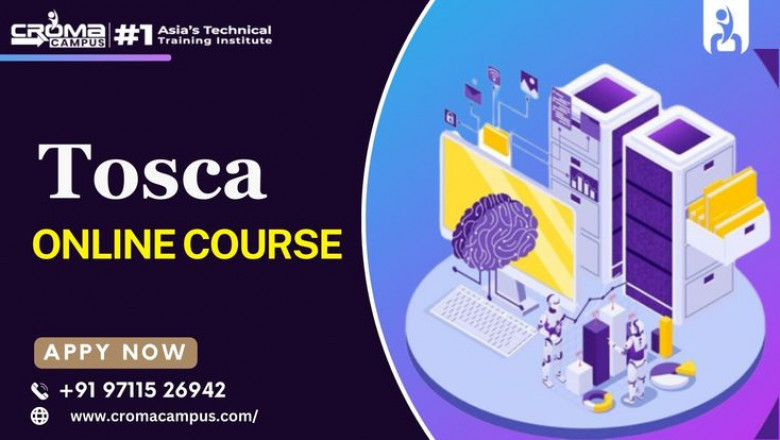views
In most automation tools, you record steps and replay them. But Tosca works differently. It builds a model of your screen. That model becomes reusable. It’s smart and easy to manage.
This is why people who join a Tosca Online Course learn about model-based testing early. It helps reduce test script maintenance. Especially when apps change often.
Tosca’s XScan Reads the Screen Like a Scanner
Tosca has a tool called XScan. It reads your screen. It finds buttons, input boxes, dropdowns, and more. It saves each item as a module.
Modules are like blocks. Each block remembers how to find and work with that button or field. These blocks are reused in tests.
You don’t need to record tests again and again. You just drag the blocks into new test cases.
How Reusable Modules Save Time?
Let’s say a button name changes from "Submit" to "Continue." In most tools, you’d update all the scripts. But in Tosca, just update one module. That change reflects everywhere.
Each module stores:
- The type of item (button, textbox, etc.)
- How to find it (XPath, ID, etc.)
- Any settings or rules for it
How Tosca and Database Testing Work Together?
Tosca also works with databases. You can connect to a database. Run SQL queries. Compare the results with what the UI shows.
This is where Database Testing Training helps. You learn to test UI and backend in one test.
You can:
- Click a button in UI
- Then check if the database has the right data
- Or pull data from a database to use in the test
How Certifications Teach You Real Project Work?
Tosca Certification includes how to create and reuse modules. It also covers advanced topics. Like:
- Test step blocks
- Business components
- Test data management
- Linking test cases to requirements
Table: Tosca vs Traditional Test Tools
|
Feature |
Traditional Tools |
Tosca Approach |
|
Reuse of elements |
Low |
High |
|
Script maintenance |
Time-consuming |
One-click update |
|
UI and DB testing together |
Usually separate |
Combined in one flow |
|
Visual test building |
Manual coding |
Drag and drop |
|
Multi-platform support |
Limited |
Web, Desktop, SAP, API |
Handling Dynamic Screens with Tosca
Some web pages change every time you open them. Like shopping sites or banking apps. Buttons move. Field IDs change. This is called a dynamic screen.
Tosca handles this well. It uses smart rules called “identification methods.” These rules help Tosca still find the right field or button, even if its name or ID changes. You don’t need to rewrite the test.
You can set conditions like:
- Use button label if it exists
- If not, use the button’s position
- Or use nearby text
These smart rules are part of module setup. Once added, Tosca works smoothly on dynamic screens.
Using Test Data from Excel or Databases
You can link your Tosca test cases to Excel or database files. This is useful when you need to test many data sets.
For example:
- Test login with 50 different usernames
- Test checkout with different payment methods
Instead of writing 50 tests, you write one test. Tosca loops through the data and runs the same steps.
This saves time. And you catch more bugs. You can even add new data later without touching the test steps.
It’s very useful in projects where test data changes often.
Conclusion
Tosca uses XScan to read screens and build reusable test blocks. You update the module once. All test cases using it update too. You can test UI and database together in one place. Learning Database Testing Training helps in writing stronger end-to-end tests. Getting a Certification trains, you to work like professionals in real projects.














Comments
0 comment